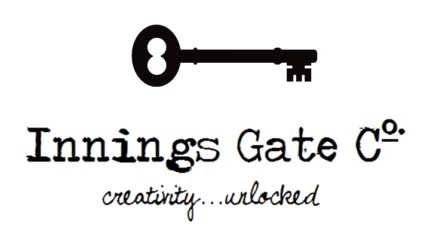This is Part 2 of 3 in my series on “A Star-Studded Wine Tour of Niagara” with iYellow Wine Club. To catch up on the first part, click here.
Our first vineyard stop on the tour was Château des Charmes, a family-run estate, started in 1978 by the infamous Paul Bosc (the godfather of Ontario wine). It is situated on the St. David’s Bench and the Paul Bosc Estate Bench in Niagara-on-the-Lake. The winery bottles around 75,000 cases (or one million bottles) of wine per year. This may sound like a lot, but compared to mega-vineyards Jackson-Triggs or Peller Estates, this ranks Château des Charmes a mid-sized vineyard. The difference being J-T and PE use Canadian-International blends, whereas CdC uses only estate grapes.
Mike Weir Wine is made by Château des Charmes. Profits from the sale of these wines go to The Mike Weir Foundation, dedicated to advancing the physical, emotional and educational welfare of children. MWW currently offers five wines:
2008 Chardonnay
2008 Cabernet Merlot
2008 Pinot Noir
2009 Sauvignon Blanc
2009 Rose
2007 Sparkling Brut
And we were graciously poured every one of them.
Upon arrival we were offered a flute of Brut (ha) to cleanse the palate. An easy-drinking sparkler, it was neither offensive nor outstanding. In the tasting room, the Sauvignon Blanc was poured first. Resembling a New Zealand SB, there were notes of citrus and limestone, with a distinct grapefruit scent. It was not too acidic, and had a vanilla aftertaste. The Chardonnay followed, oaked for 5-6 months, but otherwise aged in stainless. Much strong bouquet than the SB, with a mild buttery aftertaste. Most Chardonnays are aged in oak not stainless, and boast a much more prominent butter quality. (Chardonnay is often paired with popcorn; a decadent version of which, as recommended by MWW’s Director of Sales, Melodie Grant-O’Rourke, would be to melt a splash of truffle oil into your popcorn butter. Yup.)
The 2009 Rosé was both peachy in colour and in scent. With a sharp, crisp taste, it was not sweet as you would expect from a typical rosé, and I think it would pair nicely with a pork chop in brandy cream sauce (pour exemple). It had a very clean aftertaste. Up next was the Pinot Noir, one of my favourite varietals, and even moreso now that I have heard the Niagara winemakers refer to it as the “heartbreak grape” (how tragically wonderful! sigh!) due to its delicacy and capability of spoiling if growing conditions are not perfect (a.k.a. the moon and the stars are not in perfect alignment). Mike Weir’s version was relatively disappointing. Aged only in French oak, the body had brick-tone edges and a ruby centre, with a bouquet of caramelized cherries. However, the flavour fell flat. Dry on the tongue, it was distinctly pinot with a nutty aftertaste, but ultimately dull. Shame. (Guess that’s why they call it the blues– I mean, the heartbreaker!)
The 2008 Cabernet Merlot had an offensive nose after sniffing the delicate pinot, and I understood why Ange recommended we not take deep inhales. Black cherry, chocolate (with chilies), herbs on the nose; it would pair well with rosemary lamb.
Melodie surprised the group with a sixth taste – a 2008 Riesling in an un-labelled bottle. Made from 13-year-old vines, this was its first public tasting. (iYellow members get V.I.P. treatment!) Available in May, the Riesling had petrol on the nose, a sweet off-dry flavour, but Ange hit the nail on the head when she said it was a bit sulphuric, most likely from bottle shock (I don’t mean the movie but the shock wine gets from going from barrel to bottle, typical in riesling and chardonnay, it does settle after a week or so). It will probably be great by the time it arrives on the LCBO shelves.
After we finished the tastings, we wandered down to the shop. I was trying to decide which bottle to pick up (Ange encourages members to support the vineyards by actually buying their products, not just tasting them), when I saw a bottle of 2007 Equuleus. A blend of 50% Cabernet Sauvignon, 25% Cabernet Franc and 25% Merlot, and aged for one year in French oak barrels, it is ready to drink now but will continue to develop in the bottle for 5-10 years. I own a bottle of 2005 Equuleus but had never actually tried the wine before. (Judging a wine on its label sometimes works out in your favour.) It was AMAZING. Bold red, spicy, layered (you can tell it’s a blend of varietals), with a deep bouquet. I picked up a bottle of the ’07 to store in my wine cabinet until about 2017. (My cabinet is only stocked with 5-10-yr saver wines. I keep the table wine on the table. Or in my recycle bin, since the bottles are quickly emptied.)
Our next stop was the 20 Bees Winery, owned by Diamond Estates, to taste their line of Dan Aykroyd wines. Far from being as impressive as Château des Charmes’ magificent mansion (reminiscent of French estates), 20 Bees’ property includes as MASSIVE industrial grey processing plant and a matching mini-me TRAILER.
As someone who judges a book by its cover (and wine by its label, as it were), I have to admit I scoffed upon arrival at 20 Bees. But then I saw IT. The vineyard that changed my opinion on Canadian wine: Lakeview Cellars!
Back in 2008, my friend J and I stumbled upon a bottle of 1999 Cabernet Sauvignon that had been stored upright in a box for about two years. In a room that faced east and filled with sunlight half the day, clearly fluctuating the temperature. We didn’t expect much from the wine; neither of us being a fan of Canadian wines, but also because of the careless way in which the wine had been stored. (No respect I tells you!)
And then we poured it. And it was brown. BROWN! If you know wine, you will be squealing with joy at the thought of this. A brown cab sauv means it is OLD and it is going to taste AMAZING. And it did. I think it should have been drunk the year prior because I could tell it was past its prime, and I always say the only thing worse than opening a bottle too soon, is opening it too late. Quelle tragédie! Luckily it was still so amazing that even past its prime I knew it was about to change my life. From that moment on, I no longer considered Canadian wine to be only cheap plonk, but a CONTENDER.
So, with this new excitement about the vineyard, I followed our group into the processing facility, accompanied by two of the winemakers (Tom Green and Scott McGregor), for a tasting of Dan Aykroyd Wines.
Dan joined the Diamond Estates family in 2005 as the distribution rights owner of Patron Tequila. With and extensive wine collection at home, and a reputation as a wine lover, Dan was approached by Diamond Estates to create his own line. Dan has a say in the products at every stage, and he stays true to his mandate of taking the “snobbery” out of wine. Even some of the corks say “Made with 100% Snob-Free Grapes.” Dan Aykroyd’s wines come in two series: Discovery, and Signature. The Signature Collection are only available online or at the vineyard, not in the LCBO. (Why oh why Ontario insists on keeping our goods away from us is beyond me.) The winemakers also said that because of the VQA/ICB distinction in the LCBO, a lot of consumers are intimidated by the VQA label, and maybe the store needs a basic CANADIAN WINE section in addition to the VQAs and International-Canadian Blends. Especially when you are making easy-drinking wines for the amateur epicure, as a lot of the “stars” we visited prefer to do.
The first Dan Aykroyd wine we tasted was the Signature 2007 Fumé Blanc Reserve. Smelled like rubber. Tasted like eau de icewine. Had a good aftertaste, especially when I ate a piece of mozzarella with it. Dan Aykroyd’s easy-drinking wines are in the Discovery series. These wines are meant for the average consumer – quality wine at an affordable price. Next up was the Discovery 2008 Sauvignon Blanc. Very fruity, with a nose of guava and gooseberry, plus a vanilla finish on the palate. A bit too sharp for my tastes. Then we tasted the Discovery 2008 Merlot. It had a weak colour on the edges, but brick red in centre. Just by the sight, I could tell it was going to taste the same as it looked: thin but with a nice aftertaste. The bouquet was spicy like a cab, but softer and easier. Would probably be nice with a BBQ ostrich steak.
Another Signature series was next: the 2007 Cabernet Sauvignon Reserve. It is not yet available, and hasn’t even been priced. Much darker in colour than the Merlot, its purple juice gave off notes of plum and black pepper. Clearly a higher-end product than the Merlot, I would definitely decant it for a while before serving. The flavour became more complex with every sip. I would drink it with sauteed portobellos or wild boar osso bucco or venison stew. (Can you tell I love game meat?)
If I were to purchase a Dan Aykroyd wine, it would have been the Cab Sauv Reserve, but alas it was not yet for sale. And also, I absolutely HAD to pick up a bottle of 1998 Baco Noir Reserve from the Lakeview Cellars line-up. And then winemaker Tom Green sneakily tricked me into tasting the “port-style” 2005 Vintage Starboard. Okay so maybe it wasn’t that sneaky of him since I was already at the tasting counter. (We can’t call our ports “ports” in Canada because, like Champagne, the name refers to a region not a varietal.) The Starboard was delicious. So of course I had to get that too. *shaking fist at good taste*
A Star-Studded Wine Tour of Niagara continues in Part Three…

